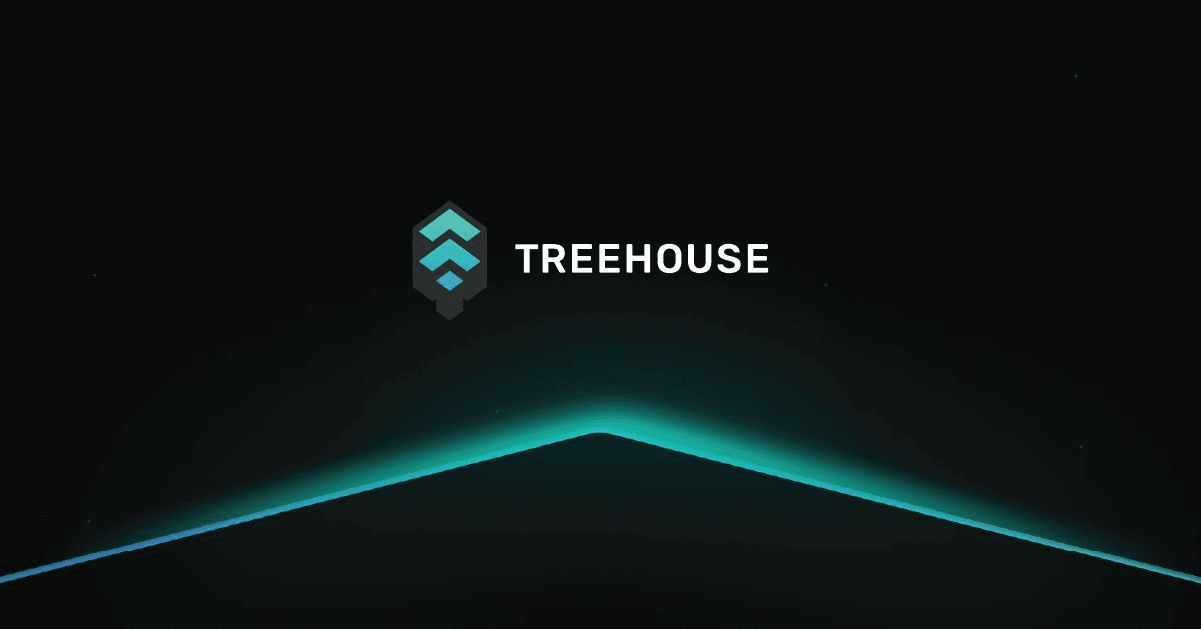
While traders in traditional financial markets are still paying billions in fines for the LIBOR manipulation scandal, the blockchain world has already birthed a more savage solution. TreeHouse, a "rebel" from the Ethereum ecosystem, is attempting to accomplish a task that Wall Street has failed to resolve in twenty years—establishing a truly manipulation-resistant interest rate benchmark.
The "Kitchen Revolution" of interest rate oracles
Imagine if the kitchen of a Michelin restaurant suddenly had a panoramic live streaming camera installed—this is what TreeHouse is doing to the on-chain interest rate market. Traditional DeFi interest rate data is like a mysterious recipe in a black box, while the DOR mechanism directly moves the stove to the transparent window of the blockchain. Its first product, the TESR curve, specifically focuses on the Ethereum liquid staking market, stripping down the actual funding costs of giants like Lido and Rocket Pool to their bare essentials.
The brilliance of this system lies in its role design: professional quote providers (Panelists) must stake real TREE tokens to gain the right to quote, data users (Referencers) must pay to inquire, while protocol integrators become the ecosystem's "water suppliers." This design, which replaces authoritative certification with economic gamesmanship, evokes the primitive beauty of early Bitcoin miners voting with their hashing power.
The "Swiss Army Knife" attribute of the TREE token
The TREE token is a masterpiece of pragmatism: it serves as a pass for data queries (Referencers pay fees), as collateral for quoting rights (Panelists stake requirements), and also functions as a reward pool for prediction markets. Even more astonishing, it packages governance rights into it, making it a true "three-in-one shampoo" for DeFi.
This design reveals the underlying logic of the team: they fundamentally do not want to create another cold, lifeless oracle, but rather to build a living economic system. While other protocols are still entangled in token empowerment, TREE has already welded itself into every critical link—queries require token burning, quotes require token locking, governance requires tokens, and even airdrops require accumulating "Nuts" points first. This "toll road" economic model is far more hardcore than those governance tokens sustained by inflation.
The "Gamification Trap" of participation mechanisms
TreeHouse's customer acquisition strategy is a textbook-level behavioral economics experiment. The GoNuts campaign turns airdrops into MMORPG games: staking assets is leveling up, referring friends is forming party dungeons, and holding NFTs unlocks hidden mission rewards. The most ruthless aspect is the anti-witch design—want to claim an airdrop? First, prove you are a real person. This combination might make the real cost for opportunists greater than the tokens they receive.
The gameplay of TSC NFTs is even darker: holders can not only receive an additional 500 TREE but also enjoy special unlocking periods. This move directly transforms NFTs from jpgs into financial instruments, reminiscent of traditional investment banks' customized structured products for major clients. It seems that the "institutionalization" of DeFi is not a future tense but a present continuous.
The "Bottom Rebellion" of interest rate benchmarks
TreeHouse's ambition goes far beyond being just a data provider. When the TESR curve becomes the recognized benchmark for the Ethereum staking market, it effectively usurps the pricing power that originally belonged to giants like Lido. Imagine a future scenario: a lending protocol uses DOR rates as a liquidation standard, a stablecoin protocol adjusts its minting costs based on it, and even on-chain government bonds use it as a discount benchmark—this is like installing a new central bank within the DeFi system.
But the real killer feature lies in its scalability. Today it establishes ETH staking rates, and tomorrow it can be replicated for U.S. Treasury yield curves. The team's casually mentioned "multi-asset DOR expansion" hides a generalization capability more terrifying than all existing oracles combined. While traditional finance still relies on Bloomberg terminals, crypto natives might already be using DOR to price all assets in real time.
The most rebellious aspect of this protocol is that it trusts neither any authoritative institution nor believes that game theory and cryptography can produce more reliable truths. When the TREE token forms a closed-loop flow among quote providers, data users, and governance participants, what we see is not just another DeFi Lego block, but a self-reinforcing financial truth machine.
Perhaps in three years, when a hedge fund manager swears in court, "I really didn't manipulate the interest rates this time," the judge will retort: "Then why didn't you use TreeHouse?"

